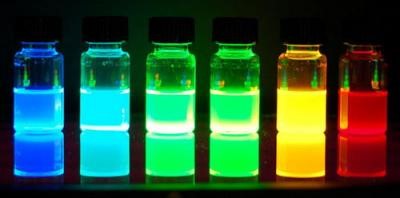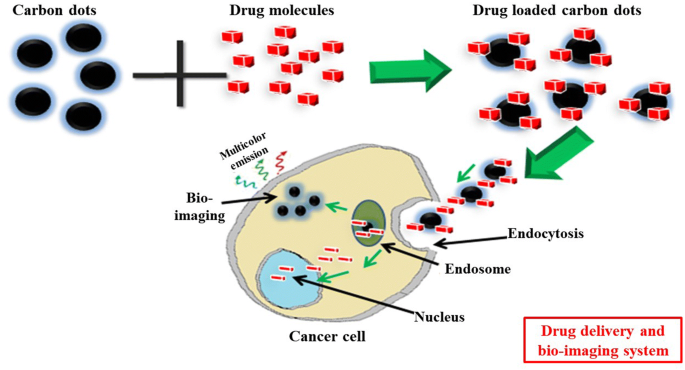Luminescence has fascinated human beings since the earliest times, thanks to a variety of natural luminescent phenomena such as dazzling aurora borealis, glow-worm, shiny crystal jellies, luminous plants and so on. Have you ever watched Avatar during the scene where Jake Sully is walking through Pandora’s beautiful luminous forest where every living thing is elegantly glowing in the night. Also, have you ever thought, “Wow, I really want this kind of magic plants that can glow”. To your great surprise, these crazy glowing plants now exist in real life because of science. Scientists embedded some fluorescent carbon dots (CDs) into the leaves of a watercress plant, and they induced the plants to glow for nearly a few hours. Isn’t it mind-blowing? Doesn’t this make you curious about the fluorescent CDs that have the power to make the plants glow? Let’s get to know more interesting facts about these fantastic fluorescent CDs.
What are CDs? The CDs are generally small carbon nanoparticles with size in the range of 2–10 nm . They are smaller than a human eye can see. But technology made it possible for us to admire the beauty of this tiny creature. The CDs can be visualized under a special instrument named transmission electron microscope (TEM). We can observe the well-arranged spherical dots that dispersed uniformly in the image captured by TEM. CDs were discovered accidentally by researcher Xu during the purification of carbon nanotubes in 2004. These accidentally identified CDs are now the youngest member in the family of nano-world.
Now you may wonder how do they fluoresce. The magic part of the CDs is photoluminescence. Photoluminescence is a glowing phenomenon from any form of matter after the absorption of light. The CDs exhibit strong luminescence underexposure to ultraviolet (UV) light. They can emit different colours such as blue, green, white and red. It’s really eye-catching; imagine yourselves enjoying a glowing night party. The emitting colours are controlled by the carbon precursors used to prepare the carbon dots. The precursors are the starting chemical used to initiate a reaction. For example, eggs, flour and sugar are the precursors to bake a cake. Various carbon precursors are widely used to prepare CDs, for instance, laboratory chemicals (citric acid, malic acid, ethanol) and natural sources (fruits, biomass, plants) .
CDs have emerged as the most precious gifts in nanotechnology because of their magical properties and applications. Recently, we hear so much sad news about irresponsible industry waste dumping in river water. Industrial effluent contains a high amount of toxic heavy metal ions such as Ca2+, Co2+, Fe2+, K+, Mg2+, Na+, Pb2+, and Zn2+, causes serious impacts for humans and the environment. These heavy metal ions are invisible monsters living inside water, harming the aquatic animals and whoever consumes the polluted water. CDs-based luminescent sensors are successfully employed for ultrasensitive detections of heavy and highly poisonous metal ions to solve this issue. Change in photoluminescence of CDs is the key indicator to detect the presence of heavy metals in a water sample.
Besides that, fluorescent inks are happy inks. Scientifically, CDs based fluorescent inks work by absorbing UV light and then emitting the light to be visible to the naked eye . CDs based fluorescent inks offer a straightforward way of protecting important documents and products.
Apart from that, CDs are extensively utilized in health and medicinal chemistry for drug deliveries . CDs acted as super drug carriers because of their emissive nature, which helped in tracing drugs in a normal cell as well as disease-affected cell. For optical imaging of cells, CDs enter into cells mainly through endocytosis and label the perinuclear cytoplasm predominantly . More importantly, the CDs can be used in cells and tissues imaging without genetic disruption. Owing to the low-toxic nature and biocompatibility properties of CDs, they can be used for multicolour bioimaging in cells, thus promising applications in biomedical research.
Last but not least, the take-home message from this article is that CDs can be cheaply and quickly prepared, and it can fluoresce in colourful ways. More importantly, they are environment-friendly and non-toxic, plus widely utilised in various applications.








